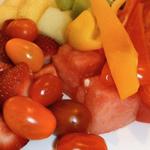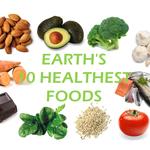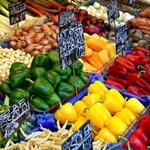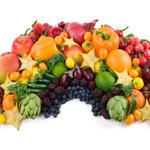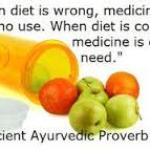The importance of eating locally harvested foods
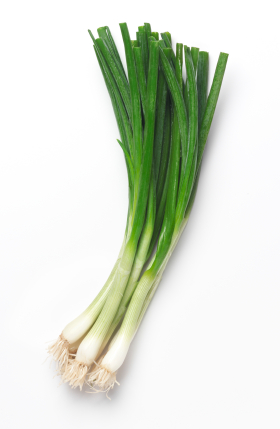
Just listened to a podcast (01) with Chris Kresser interviewing the author of the book ‘Eating on the Wild Side: The Missing Link to Optimum Health’ (Jo Robinson). This podcast was primarily about strategies for maximizing nutrient density using food that is readily available to us. Here are my notes:
Eating on the Wild Side – Jo Robinson – [Podcast notes]
The importance of eating locally harvested foods
- After a plant is picked, they are not really dead, they continue to respire; they burn up their antioxidants & their storage sugars by the hour.
- Some plants burn it up much more rapidly than others, and it turns out that the ones that are most highly recommended for health (asparagus, broccoli, kale, spinach, mushrooms, arugula (rocket), lettuce) respire so rapidly that within 2 or 3 days of harvest , they might have half or even less of the antioxidants, they’re more bitter & have lost a lot of their natural sugars
We’ve just assumed… ‘well if they can arrive in the grocery store, and still “look” fresh, that they must be fresh’, but the industries main question that they solved was “how can we grow varieties that will look fresh even though they’ve been shipped for a week & in a warehouse for up to 6 months?” They figured out how to make it look fresh but at the expense of not holding onto the sugars, the flavour, & most importantly: the antioxidants/nutrients.
Example: Broccoli
Broccoli & Kale are foods that lose it’s nutrient value more quickly than most others.
One study that looked at the difference of the total nutrient content of broccoli when it’s first picked & when it’s in the supermarket (an average of about 7 weeks later) found that after the 7 weeks, it had lost it’s ability to fight cancer and reduce the risk of heart attack & stroke.
There is a perception that organic broccoli from the supermarket is going to be more nutrient-dense, but the reality is that: where it’s picked, when it’s picked, & how quickly it’s consumed is far more important than whether it’s organic or non-organic (from a nutrient-perspective, not a toxin-perspective).
How to get the most out of Broccoli
- Ideally: growing broccoli in your own backyard, then harvesting & eating it on the same day.
- Short of that: at the very least, buying from a Farmer’s market & eating it within 2 days.
- If you buy from a supermarket: eat them first – the night that you buy them or the next day.
- Eat last: Apples, potatoes & carrots can last longer because they aren’t burning up their antioxidants as fast.
How to get the most out of Garlic
- Anti-microbial properties. Potent cancer-fighter.
- If we take fresh garlic & put it into hot oil, we destroy its ability to produce allicin which is the cancer-fighting compound.
- Chop it/press it/dice it & set it aside for 10 minutes. While it’s resting it makes copious amounts of allicin.
- Once allicin is created, it’s not destroyed by heat.
- Garlic is an incredibly potent anti-oxidant that will attack free-radicals more rapidly than any other substance known.
- Garlic can destroy free radicals before it can get to an important part of our body, like our DNA.
Choosing the right varieties
Choosing the right varieties of Lettuce
- Iceberg lettuce is really low in nutrients.
- Then light-green leafy lettuce
- Then dark-green leafy lettuce
- Then green leafy lettuce with brown & orange tinges
- Then finally, the most nutritious lettuce is red-leaf lettuce
- Vear towards the dark green and especially the red-colours.
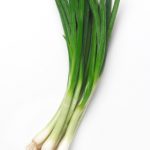
Choosing the right varieties of Onion
- Sweet Onion only has about 20% the antioxidants & the cancer-fighting compounds
- Choose onions with more fire.
- Scallions (spring onions / green onions) has 120 times more antioxidants than white onions.
- The green part of the green onion is the best for us, so chop it all the way up.
Choosing the right varieties of Tomatoes
- Lycopene is the most important phytonutrient in tomatoes
- A small cherry tomato might have 20 times more lycopene than a big tomato
- In nature, tomatoes look just like cherry tomatoes or even smaller (big tomatoes are man’s creation).
- Cherry tomatoes are actually as good as wild tomatoes in terms of their health benefits.
Choosing the right varieties of Grapes
- Thompson Seedless grapes is a 1000yo heirloom from a mutant plant discovered somewhere in Persia. They have lost the ability to produce anthocyanins & resveratrol (two reasons we eat grapes & drink red wine).
- Choose darker colored grapes. The darker, almost black ones are great for us.
- Concord grapes are almost a wild grape. They’re basically a cross between many wild grapes, & they now they are also seedless.
Storage to maximize nutrients
- We need to do everything we can to stop that oxidation process.
- Primarily keeping them away from light, oxygen & heat.
Storing Spinach:
- Wrap it in a plastic bag, sealable. Press most of the air out of it and seal it.
- Prick it with little holes (needle/pin).. this is a study, not made-up.
- Limits the amount of oxygen that the spinach has access to, so it cant use up its antioxidants as rapidly (& will keep it’s sugars longer).
- If you do this, you’ll have 120 times more antioxidants after just 1 day (what you would’ve lost)
Storing Lettuce:
- If you take your lettuce and you rip it up the day before you eat & repeat the same process as the spinach (rinse, dry, rip it up, put it in that plastic bag, squeeze the air out, do the pin pricks)…
- In one day, because you have ripped it up, it will have 4 x more antioxidants.
- Why? because that lettuce is still living, it’s not dead. It thinks it’s being eaten by this big animal. Overnight it’s going to create these compounds, called phytonutrients to protect itself from the next animal that comes along. Ripping it up gives it the message to make more phytonutrients.
At the end of each chapter of her book, Jo lists exactly which varieties to look for in the farmers’ market & also in seed catalogs. I’ll update this post with a link to her book later (I’m running late).. but Chris Kresser has links to her book in his article on the podcast page (so you can also read the entire transcript and listen to the podcast). Could ‘Eating Wild’ Be The Missing Link to Optimum Health? – Transcript, Article, & Podcast Download
Related articles across the web

Site Notifications/Chat:
- Telegram Post Updates @JourneyToABetterLife (channel)
- Telegram Chatroom @JourneyBetterLifeCHAT (say hi / share info)
- Gettr Post Updates @chesaus (like fakebook)
Videos:
References

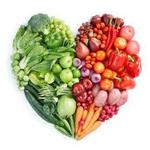 Eat A Rainbow
Eat A Rainbow